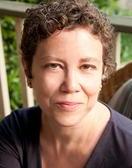
Peace card by emma’s revolution
We put a tin Mexican star with eight colorful points on the top of our Christmas tree. This star refers to the star that led the Magi to find the baby Jesus, as the story is told in the gospel of Matthew. And from a Pagan perspective (on a tree with Pagan origins), the star as a winter Solstice theme makes sense to me because we are more aware of the brilliance of the stars on the longest of all nights.
But this year, the number of interfaith families putting a six-pointed star, the traditionally Jewish symbol known as the Star of David, on top of Christmas trees seems to have reached some kind of critical mass. Reporters have been calling me to ask about this kind of holiday mash-up, or “Chrismukkah” celebration. And lovely interfaith couples have been tweeting and emailing me to market their mixed-faith holiday greeting cards and ornaments.
My family does not celebrate Chrismukkah, but we are beginning to feel outnumbered. One year, I had a very public and feisty back-and-forth with a blogger who both misunderstood and objected to my family’s approach to the holidays. Our family doesn’t hang dreidels or top the tree with a Star of David. Our approach to being an interfaith family has been to seek to provide our children with literacy in both family religions, and respect for the integrity of each. That has meant teaching and celebrating the two religions separately, giving them each space, in order to honor their specific historical and cultural and theological meanings.
Every interfaith family has to find the pathway that works best for them. For some, that will mean choosing one religion and celebrating the “other” holidays only with grandparents. For our family, it means celebrating both, but in separate, traditional ways. But for what seems to be an increasing number of more-or-less purely secular interfaith families, it has come to mean the freedom to create mash-up celebrations.
As Samira Mehta, an academic with a forthcoming book on interfaith families recently explained to her local newspaper, “In the past 20 years, Chrismukkah has become increasingly public. First, it has grown because of the increasing secularization of society and the growing number of ‘nones’ (those not affiliated with any institutional church or synagogue), and secondly the growing acceptance of multiculturalism in our society.”
I am all for accepting multiculturalism, for seeing what is shared and universal in our families and our cultures, and for celebrating together the theme of hope for peaceful pluralism in a world troubled by intolerance and violence. That is why the first ornament I placed on our tree this year was a card from our friends Pat and Sandy (emma’s revolution) who wrote the moving Peace Salaam Shalom song after 9/11, and created a graphic representation of these three words. While my family does not celebrate a mash-up of religions, we do acknowledge that there are historical ties between the three sibling religions of Judaism, Christianity and Islam. And now, with Islamophobic politicians spreading fear, is a good time to remember these ties.
After hanging the Peace card on our tree, I wanted to stop there–to have this be the only ornament this year, to lift up this crucial message. But then our kids arrived home from college on the Wrong Coast, and we wanted to trim the tree together as a family, and put up all the beloved ornaments. And so we did that. They understand that the desire for peace must be universal, but on our tree we hang Christmas ornaments. Because even though my family has been an interfaith family for two generations now, we want our children to understand the distinct religious cultures, and the specificity of a history that continues to both unite and divide us.
Susan Katz Miller’s book, Being Both: Embracing Two Religions in One Interfaith Family is available now in hardcover, paperback and eBook from Beacon Press.

